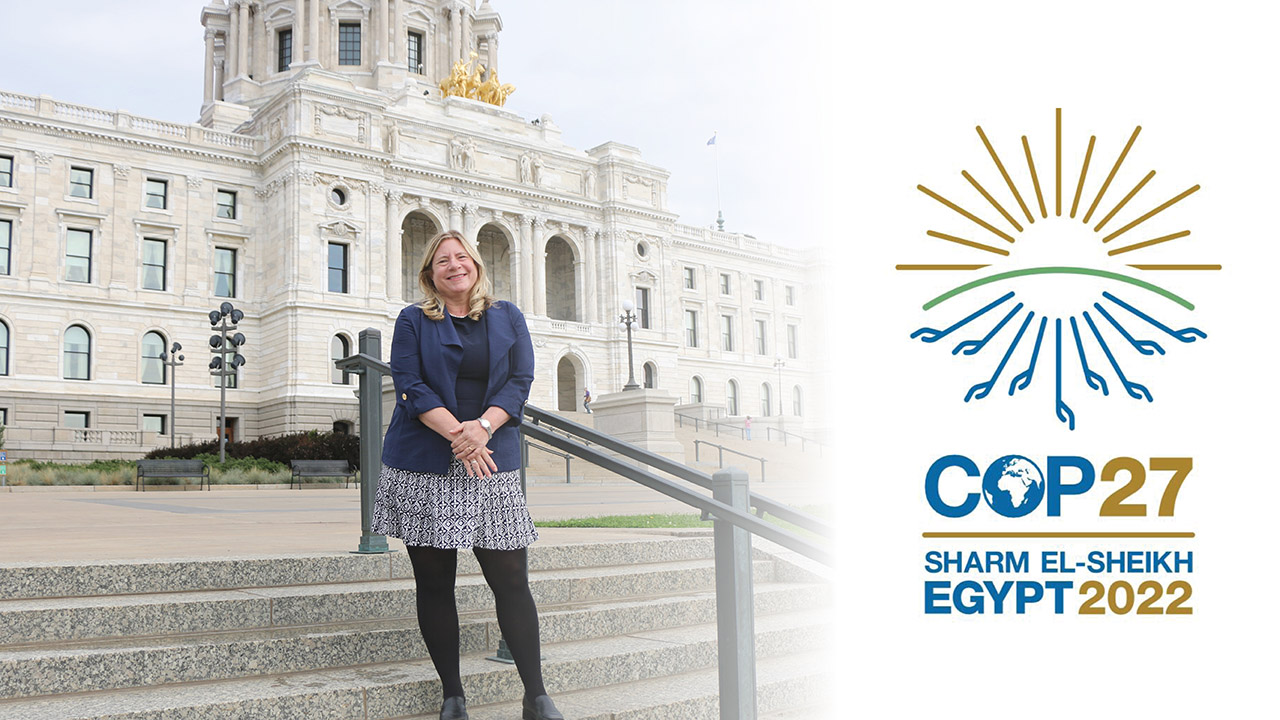
After a year of exciting federal and state developments for clean energy and climate, representatives from Minnesota and the U.S. are gearing up to attend the global climate summit, COP27, the U.N. Climate Change Conference in Sharm El-Sheikh, Egypt. Fresh Energy’s J. Drake Hamilton will be representing Fresh Energy on the Minnesota delegation and will be at COP27 November 6-19, 2022.
COP27 being held at Sharm El-Sheikh sets an exciting precedent as the first large-scale COP in Africa. The host country, Egypt, is aiming to inspire more than 35,000 participants from 197 countries over the two-week event.
As in years past, J. has proposed multiple presentations for the global stage at COP27. This year, she put forward applications for two panel presentations both featuring the Midwest’s bold commitments on climate action, commitments that were further bolstered by the September 16, 2022 announcement of the Walz Administration’s Climate Action Framework. The Framework aligns with achieving the science-based IPCC (Intergovernmental Panel on Climate Change) goals to confront climate change—including reducing greenhouse gas emissions by 50 percent by 2030 and achieving net-zero emissions by 2050. Presentations and panels will be selected in the coming weeks, so stay tuned for updates!
In addition to climate commitments from Minnesota and the Midwest, the U.S. will be bringing new energy- and climate-focused laws to the table. Since COP26 in 2021 when the U.S. commitment to carbon reductions was heavily scrutinized, both the Infrastructure Investment and Jobs Act (also known as the Bipartisan Infrastructure Law) and the Inflation Reduction Act (IRA) have been signed into federal law.
“With the passage of these new laws, the United States will be showing up in a far more productive way than in years past,” said J. Drake Hamilton, senior director, science policy at Fresh Energy. “I anticipate that the message from the United States at COP this year is that it’s a new day to fight against climate change, thanks to the Inflation Reduction Act, with its $369 billion in climate and clean energy investments. The new law is the largest, most ambitious climate legislation Congress has ever passed. But we’re just getting started. We’re going to continue passing more policies at the national, state, and local levels.”
Many of the discussions that took center stage at COP26 will continue into this year, including turning the Glasgow Climate Pact—which includes Finance for Climate Adaptation—into action. An important element of this is progress on the delivery of the annual $100 billion USD promised for developing countries for climate adaptation and mitigation.
“The adequacy and predictability of climate finance is key to achieving the goals of the Paris Agreement,” said Hamilton. “To that end, there is a need for enhanced transparency of finance flows and facilitated access to meet the needs of developing countries, especially across Africa, least-developed countries, and small island developing nations.”
As extreme weather events including heatwaves, floods, and forest fires have become an everyday reality around the globe, uniting to limit warming to well below two degrees Celsius and working hard to keep the 1.5 degree Celsius target alive will be key at COP27. Stay tuned for more updates in the coming months from J.!
